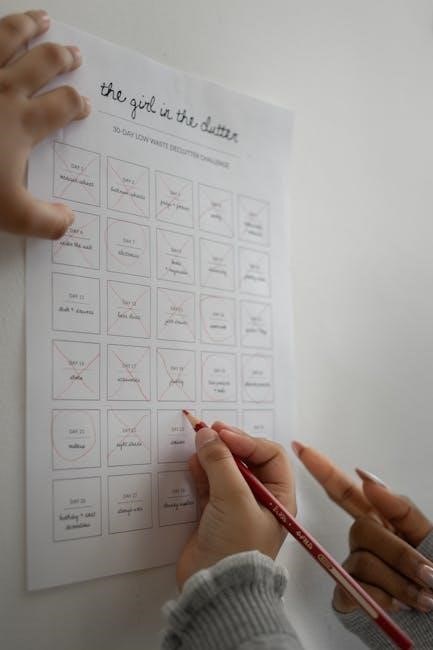Oboe Fingering Chart PDF: An Overview
Oboe fingering charts, often in PDF format, are essential tools for oboists. These charts offer a visual guide to finger placements for producing different notes. They cover basic fingerings and alternatives, aiding in learning and practice.
Understanding Oboe Fingerings
Understanding oboe fingerings is crucial for oboists of all levels. Oboe fingerings can be complex, especially with the addition of sharps, flats, and alternate fingerings. A fingering chart serves as a roadmap, visually representing the finger combinations needed to produce specific notes. Learning to read and interpret these charts is fundamental to mastering the instrument.
Beginners typically start with basic fingerings, gradually expanding their knowledge to include more advanced techniques. Alternate fingerings are used for various purposes, such as improving intonation, facilitating fast passages, and achieving specific tonal colors. Familiarity with these nuances enables oboists to navigate the instrument’s full range and expressive capabilities.
Basic Oboe Fingering Chart
A basic oboe fingering chart typically includes fingerings for notes within a limited range, often from low B-flat to high D. This chart serves as a starting point for beginner oboists;
Notes from Low B-flat to High D
The fundamental range covered in many basic oboe fingering charts spans from low B-flat to high D. This selection of notes allows beginners to grasp essential finger placements and begin playing simple melodies. These charts usually display diagrams of the oboe, indicating which keys to press for each note within this range. For each note, the chart will show a diagram of the oboe keys, clearly indicating which fingers to depress. This is crucial for beginners.
This range is a good foundation for new oboists. The chart’s focus on this range ensures a solid base before moving to more difficult notes. As skills improve, oboists can explore charts with wider ranges.

Comprehensive Fingering Charts
Comprehensive oboe fingering charts provide detailed fingerings. They encompass sharps, flats, and alternate fingerings. These resources are invaluable for advanced players seeking nuanced control and expanded tonal possibilities on the oboe.
Including Sharps, Flats, and Alternate Fingerings
Beyond the basic oboe fingering chart, a comprehensive version incorporates sharps and flats, expanding the instrument’s chromatic capabilities. This inclusion allows oboists to navigate complex musical passages and explore a wider range of keys. Furthermore, alternate fingerings are presented, offering solutions for improved intonation, smoother transitions, and enhanced tone quality in specific registers.
Alternate fingerings can be invaluable for tackling fast passages where standard fingerings may prove cumbersome. They also enable subtle adjustments to pitch, ensuring accurate intonation, particularly on instruments with inherent tuning quirks. Moreover, certain alternate fingerings can modify the oboe’s tone color, allowing players to achieve desired expressive effects. Mastering these comprehensive charts empowers oboists with greater technical facility and artistic control.

Fingering Charts for Different Oboe Models
Oboe fingering charts vary depending on the oboe model. Student models often have simplified key systems. Conservatory models feature more complex mechanisms, thus requiring distinct fingering charts.
Student vs. Conservatory Models
When exploring oboe fingering charts, a key distinction lies between charts designed for student models and those for conservatory models. Student oboes typically feature a simplified key system, making them easier for beginners to learn. Consequently, their fingering charts are less complex, focusing on the essential notes and basic finger placements. These charts often omit alternate fingerings and intricate trill fingerings to streamline the learning process.
In contrast, conservatory oboes boast a more advanced and comprehensive key mechanism. This allows for greater flexibility in fingering, extended range, and improved intonation. Fingering charts for conservatory models are therefore more detailed, incorporating alternate fingerings, trill fingerings, and microtonal adjustments. These charts cater to the needs of experienced oboists who seek nuanced control over their instrument’s sound.
Reading Fingering Charts: A Guide
Understanding oboe fingering charts is crucial for mastering the instrument. These charts visually represent the oboe’s keys and their corresponding notes. Typically, they depict the oboe with circles indicating keys. Shaded or filled circles denote keys that should be pressed down, while open circles represent keys that should be left open.
The charts usually organize notes chromatically, displaying fingerings for sharps and flats alongside natural notes. Some charts also include trill fingerings and alternate fingerings for specific passages. Familiarize yourself with the chart’s layout and symbols, paying attention to any additional notations or instructions. Practice translating the chart’s visual cues into physical finger placements on the oboe. Consistent practice with a fingering chart will improve your note recognition and technical proficiency.
Alternate Fingerings and Their Uses
Alternate fingerings on the oboe serve various purposes. These include facilitating fast passages, modifying tone color, and correcting pitch. They offer solutions to technical challenges and enhance musical expression.
For Fast Passages, Tone Modification, and Pitch Correction
Oboe players often utilize alternate fingerings to navigate fast passages more smoothly. Standard fingerings may prove cumbersome in rapid sequences, and alternate options can provide quicker transitions between notes. These specialized fingerings are designed to maintain clarity and accuracy at faster tempos.
Furthermore, alternate fingerings offer a means of tone modification, enabling oboists to subtly alter the timbre of a note. Depending on the musical context, a player might choose a fingering that produces a brighter or more subdued sound.
Pitch correction is another crucial application of alternate fingerings. Certain notes on the oboe can be inherently sharp or flat, and alternate fingerings offer a way to bring them into better tune. This ensures accurate intonation across the instrument’s range.

Trill Fingerings on the Oboe
Trill fingerings on the oboe are specialized fingerings used to rapidly alternate between two notes, creating a shimmering, ornamental effect. Mastering trill fingerings is essential for executing many passages in oboe repertoire. These fingerings often involve quickly opening and closing a key or combination of keys while maintaining a stable embouchure.
Effective trilling requires both technical proficiency and a good understanding of the instrument’s mechanics. Oboists must develop the finger dexterity needed to execute rapid alternations smoothly and evenly. Additionally, they need to be aware of the specific trill fingerings that work best on their instrument.
Some trills may require the use of alternate fingerings to achieve the desired speed and clarity. Experimentation and practice are key to finding the most effective trill fingerings for various note combinations.
Resources for Oboe Fingerings
Numerous resources exist for oboe fingerings, including PDF downloads and interactive charts. These tools aid oboists in learning and practicing finger placements, covering basic notes, alternate fingerings, and trills for various oboe models.
PDF Downloads and Interactive Charts
For oboists seeking accessible and comprehensive fingering information, numerous resources are available online. PDF downloads offer printable charts that can be kept handy for quick reference during practice sessions. These charts typically cover a wide range of notes, including standard fingerings and alternate options for improved intonation or technique.
Interactive oboe fingering charts take learning a step further by allowing users to click on specific notes and view the corresponding finger positions. These digital tools often include audio examples, making it easier to associate fingerings with the correct pitch. Many interactive charts also provide alternate fingerings and trill fingerings.
Whether you prefer the convenience of a printable PDF or the interactivity of an online chart, these resources are invaluable for oboists of all levels.

Learning Resources
To enhance oboe fingering skills, flashcards and online tools offer interactive methods. These resources aid memorization and provide convenient practice. They are perfect for oboists of all skill levels.
Flashcards and Online Tools
For oboe students seeking to master fingerings, flashcards and online interactive tools offer valuable resources. Flashcards provide a tangible method for memorizing finger placements for each note, often including staff notation and note names. These are typically available as printable resources or physical card sets. Online tools offer a dynamic approach with interactive fingering charts, allowing users to click on a note and visualize the corresponding finger positions.
Some platforms even incorporate audio examples to associate fingerings with the correct pitch. Features like real-time assessment, grading, and built-in practice tools enhance the learning experience. These resources are accessible across devices, providing flexibility for practice anywhere. These resources can greatly simplify learning.
